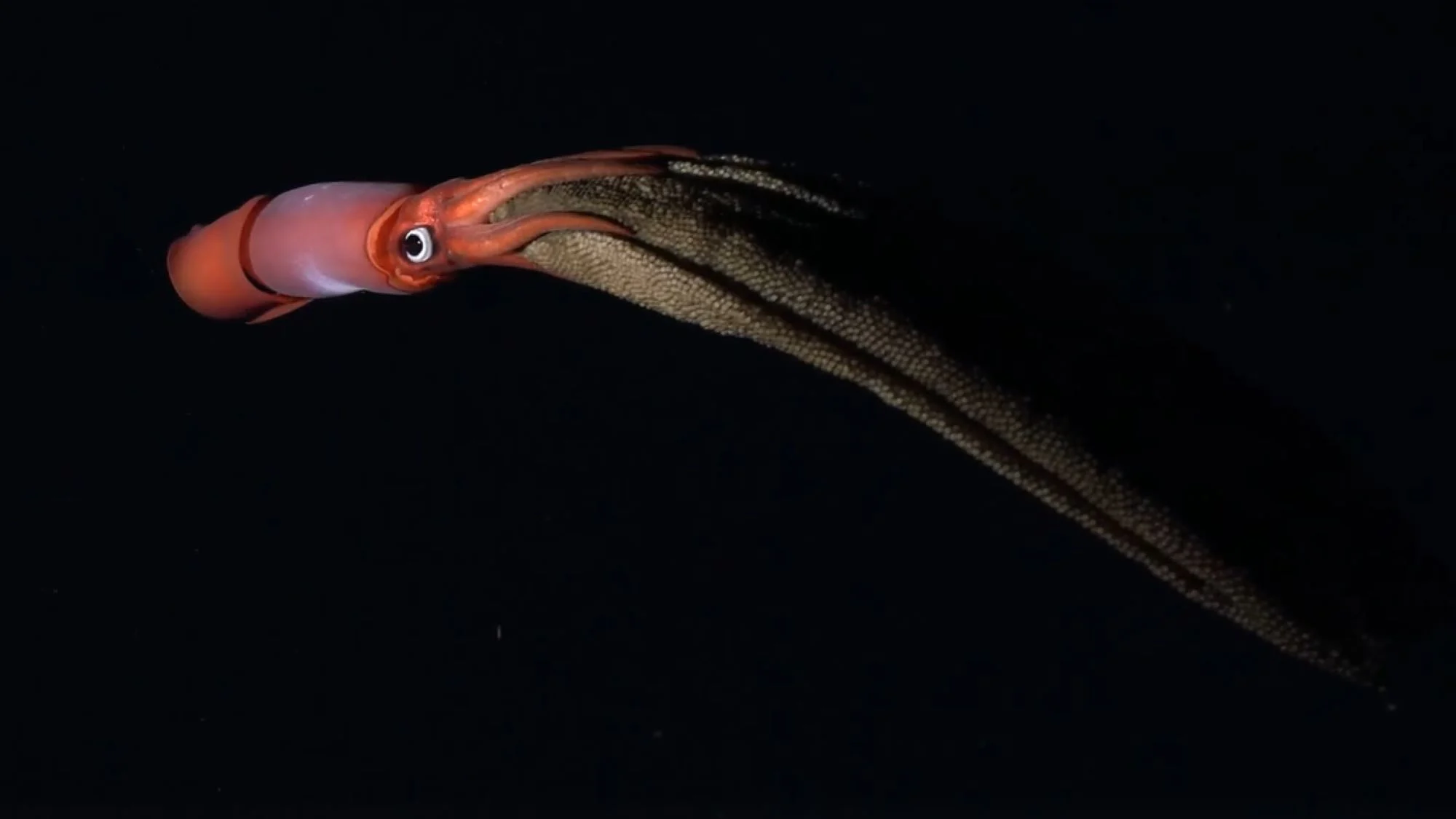The Enigma of the Ocean: Black-Eyed Squid’s Maternal Marvel
A Glimpse into the Abyss: The Black-Eyed Squid’s Spectacle
The deep sea, a realm shrouded in mystery and darkness, recently unveiled one of its astonishing secrets off the coast of Costa Rica. Researchers captured mesmerizing footage of a black-eyed squid (Gonatus onyx), gracefully gliding through the inky depths. What sets this sighting apart is the squid’s extraordinary maternal behavior – it was carrying thousands of eggs, suspended like an ethereal gown from its arms.
Unraveling Squid Myths
For years, marine biologists had pigeonholed squids as creatures that simply lay their eggs in clusters on the seafloor, expecting them to fend for themselves. However, the black-eyed squid challenged this notion dramatically. Initially observed by Brad Seibel, a postdoctoral fellow at the Monterey Bay Aquarium Research Institute (MBARI), the species exhibits a rare brooding behavior. This breakthrough discovery has since turned our understanding of squid reproductive habits on its head.
The Squid’s Maternal Journey
The black-eyed squid, a figure of maternal dedication, carries up to 3,000 eggs through the ocean’s vast expanse. This isn’t a fleeting task; the cephalopod mother nurtures this precious cargo for several months, foregoing feeding during this period. The eggs, suspended from hooks on the squid’s arms, receive constant care. The mother squid uses her arms to pump fresh, oxygen-rich water through the egg mass, ensuring the embryos’ development and survival.
The Life of a Deep-Sea Matron
Adaptations for Survival
Living at staggering depths above 6,200 feet in the Pacific and Atlantic oceans, the black-eyed squid has evolved remarkable adaptations. Its body achieves neutral buoyancy, allowing it to hover effortlessly in the ocean’s depths. However, the task of egg-carrying comes at a cost – these brooding squids cannot swim fast and may fall prey to deep-diving marine mammals.
A Rare Glimpse into Squid Parenting
The footage of this black-eyed squid, taken by the Schmidt Ocean Institute, offers a rare window into the complex and largely unknown world of deep-sea cephalopods. It challenges long-held perceptions and opens up new avenues for understanding the secretive lives of these remarkable creatures.
Conservation and Understanding
The Significance of the Discovery
The observation of the black-eyed squid’s brooding behavior is more than just an underwater spectacle; it’s a crucial piece in the puzzle of oceanic biodiversity. Understanding these behaviors is key to conservation efforts, especially in a world where marine ecosystems face increasing threats from human activities.
Future Research and Exploration
This discovery highlights the vast unknowns still lurking in our oceans’ depths. It serves as a call to action for further exploration and study, not only of the black-eyed squid but of the myriad species that inhabit our planet’s final frontier – the deep sea.
Embracing the Mysteries of the Deep
A World Beyond Imagination
The black-eyed squid’s maternal journey is a testament to the wonders and mysteries that lie beneath the waves. It serves as a reminder of the ocean’s boundless mysteries, waiting to be explored and understood.
The Ocean’s Call
As we delve deeper into the ocean’s secrets, we’re constantly reminded of the intricate and fascinating life forms that call it home. The black-eyed squid, with its egg-laden arms, is just one of the many marvels that continue to captivate and inspire us in our quest to unravel the mysteries of the deep.


1 comment
[…] Source link […]